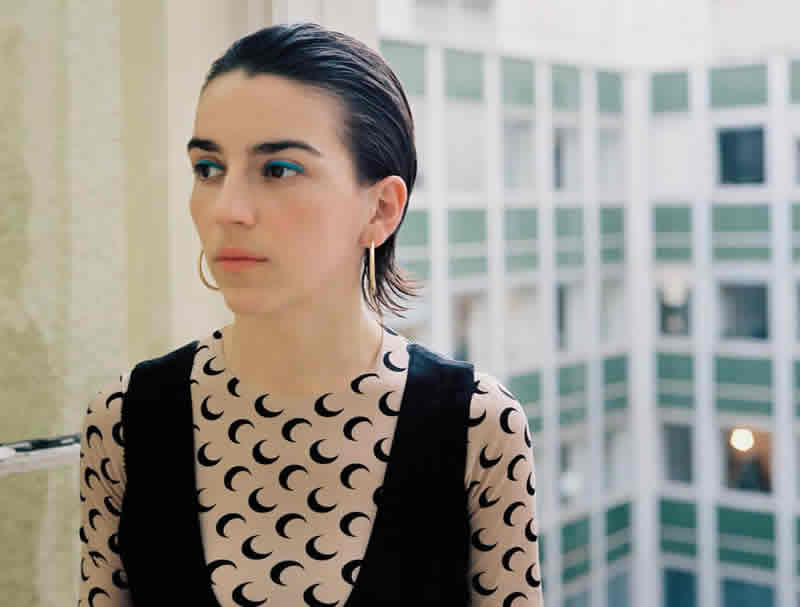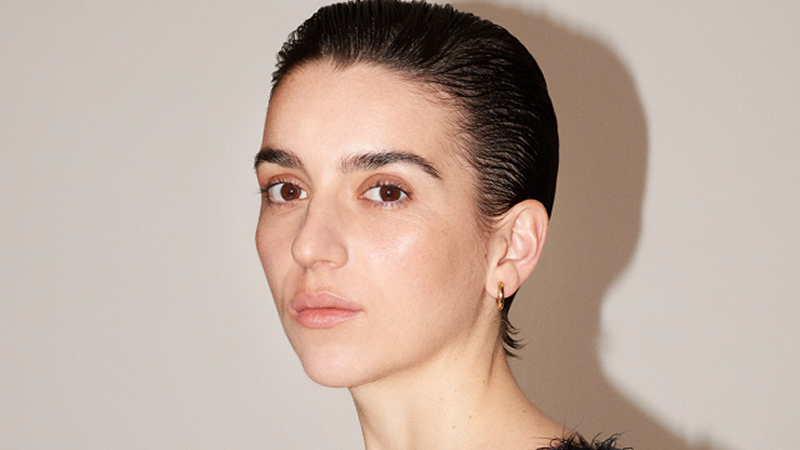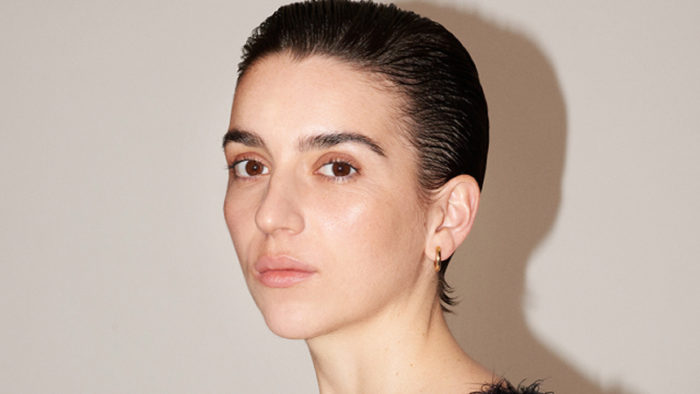“Tomorrow is another day,” said Marine Serre, a designer whose eyes are riveted on the future no matter what she’s doing — designing, upcycling textiles or using CGI to create sci-fi fashion films.
Serre, a breakout talent in Paris, and winner of the LVMH and ANDAM prizes, in a conversation with Miles Socha, WWD’s international editor, at Fairchild Media Group’s Tech Forum, talked about how and why she merges tech and textiles — many of them old or surplus — and why she’s so eager to express herself on screen.
Her collections and films address the environmental apocalypse and express her love of science fiction as she looks to connect with young generations.
“When I do movies, I’m really free. I can let my imagination go, and not think so much about the commerciality of the garment. I think it’s a really great way to speak to people,” Serre told WWD in an interview last year.
That approach hasn’t changed, and the film continues to be an important part of Serre’s seasonal collections.
“For quite some time I’ve felt like fashion was a little bit difficult because you don’t have a lot of time, you have 10 minutes to show, 10 minutes to express the emotion, to connect with people. It’s quite short.
“I finally realized that by making a movie, any sort of movie — with or without CGI — I could connect better with people, even with people who are not at the show. Also, there are things that you can’t do physically,” that you can do in the film.
CGI figures big in her work: Models’ eerie eyes resemble embers; flowers like-colored moths fly out of mouths while red fruit pops from plants in the designer’s many films, which have a “Mad Max,” or “Blade Runner” sensation.
“I think my generation is quite used to seeing CGI models from when we were young, so it was normal for me to start using it, and quite natural for me to work like that,” said the designer.
Serre, who sits at the helm of a young, indie brand, said she also likes the innate limitations of filmmaking.

She’s forever on a budget and believes that’s “a really good thing. I think it’s in the DNA of the brand to have constraints in everything we do. It’s the same when we are upcycling. It’s part of my way of creating. I don’t see that as something difficult. I actually want to embrace the fact that we have limitations. Of course, it’s not perfect, but nothing is ever perfect anyway,” she said.
“Instead of a character, you also can create something that feels like a human being,” added Serre, who has collaborated with creative studio Blonstein on her surreal landscapes and characters. “For a young brand, I think it’s quite ambitious. We sweat quite a lot during most of these projects, but it’s always so worth it just as an experience — and that makes me happy.”
Serre takes a similar postmodern approach to the way she sources and designs her collections. She rejects conventional ideas, and is deft at crafting something new out of bits of history, popular culture, and home interiors.
About half of her collections are made from upcycled materials — silk scarves, bedsheets, overproduced jacquard towels and vintage crochet tablecloths –— and she has great respect for the past lives of the materials she uses.
“You need a human being to select the fabric, to understand the past and where it’s come from,” said Serre.
“I can’t lie — it really is about a feeling. You need to feel the old T-shirt, to feel the print, to know where you are placing it. The garment had a life before, and you can feel that in the carpets, bedsheets, and towels. They’re carrying so much information, and that’s really important to me.”
Serre added that when she started upcycling, she used vintage materials, but it became too expensive. She’s since opened her arms to more humble, everyday textiles. “I think that helped us to bring the story to more people, which I think is very important.”
Her aim, she said, is to employ as much organic material as possible, and to work with what already exists.
“We are a young brand, we are trying to learn, and there is a lot of information — and a lot of possibilities. When you’re a young brand you can’t always afford a new fabric that’s been created with mushrooms — or things like that. We’re doing what is possible,” said the designer.
“I am really someone who believes in action, and we want to do things well. Of course, we are always searching for new techniques, and we are always open, but I think it’s also about being honest with a place that you are in, accepting what you can do now, and acknowledging that tomorrow is another day.”


